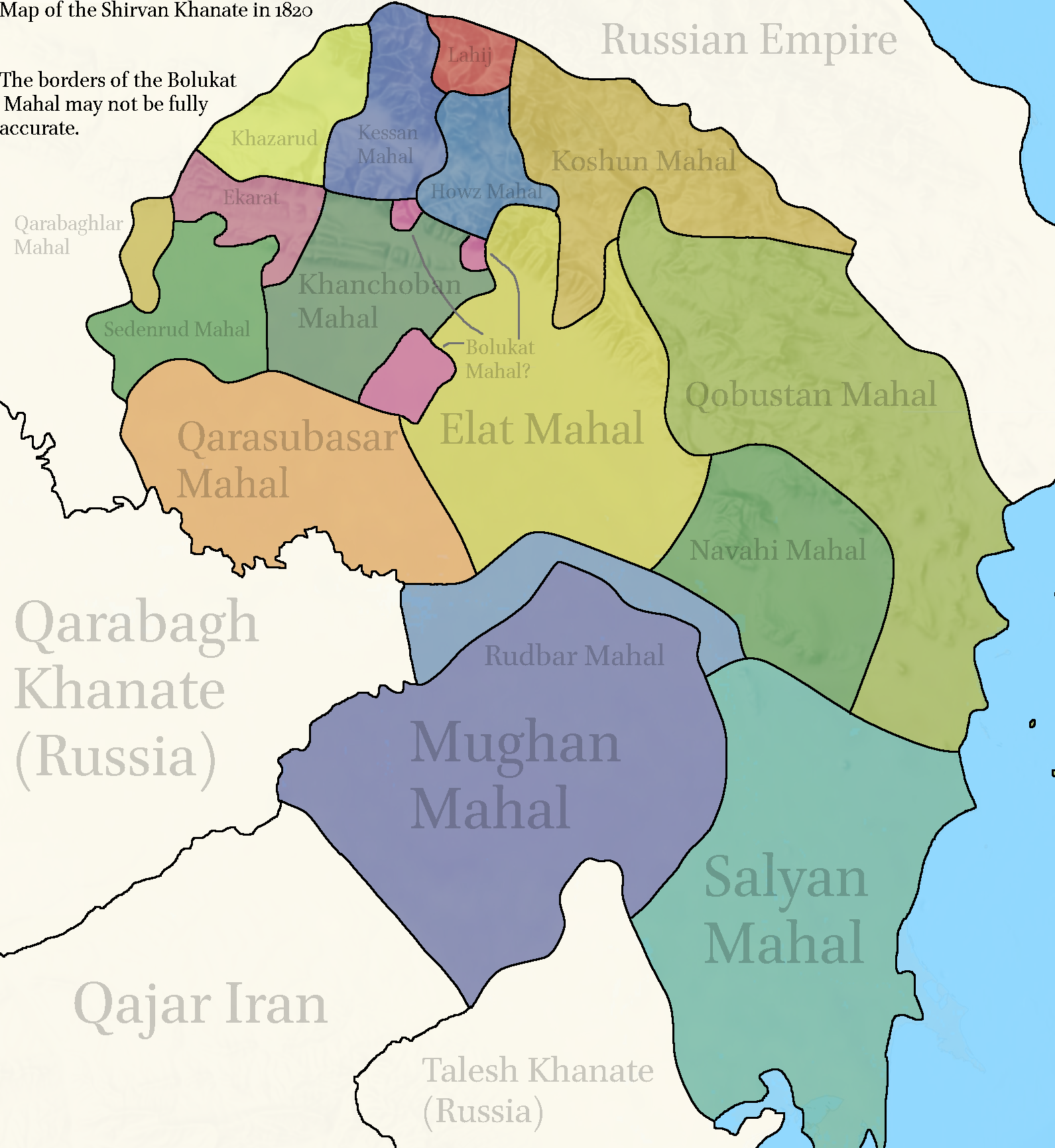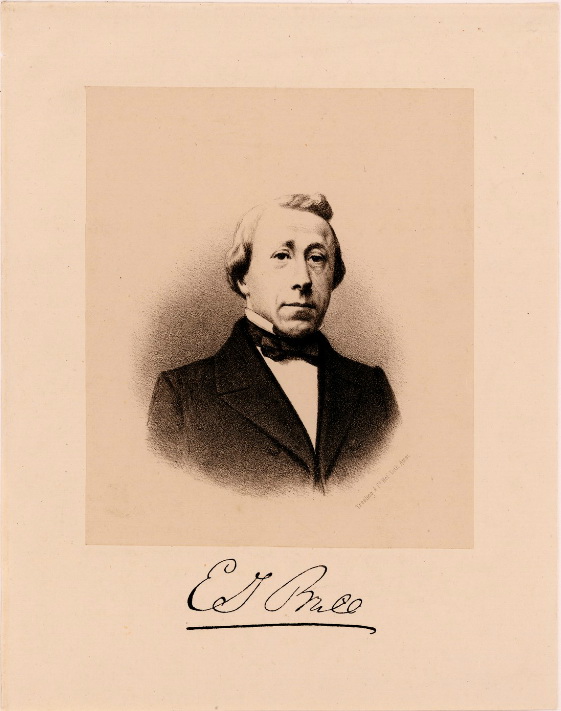|
Aghakishi Beg
Agha Kishi Beg ( fa, آقا کیشی بیگ) was the khan of the Shaki Khanate from 1755 to 1759. Agha Kishi Beg was a son of Haji Chalabi Khan Haji Chalabi Khan (; 1703 1755), was a statesman, warlord, ruler and founder of Shaki Khanate. Origin Born to a certain landlord Gurban beg during the reign of Sultan Husayn in 1703, he was of noble birth. Brockhaus and Efron Encyclopedic Dic ..., the khan of Shaki and a grandson of the priest of the former church of Kish. In 1755, Haji Chalabi Khan died and was succeeded by his Agha Kishi Beg. In addition to fortifying the town of Shaki, Agha Kishi Beg carried on his father's policy of maintaining cordial ties with the nearby khanates of Shirvan and Quba. Agha Kishi Beg married the daughter of the Qazi-Qomuq chief in Daghestan, Mohammad Khan. In 1759, Agha Kishi Beg was persuaded to a meeting where he was killed by Mohammad Khan and the latters ally Soltan Ali, a well-known local figure. A grandson of Hajji Chalabi Khan, Muhammad ... [...More Info...] [...Related Items...] OR: [Wikipedia] [Google] [Baidu] |
Shaki Khanate
The Shaki Khanate ( fa, خانات شکّی, also spelled as Sheki Khanate, Shekin Khanate, Shakki Khanate) was one of the most powerful of the Caucasian Khanates established in Afsharid Iran, on the northern territories of modern Azerbaijan, between 1743 and 1819 with its capital in the town of Shaki. History The khanate was founded in 1743 as a result of revolt led by Haji Chalabi Khan against Safavid Empire. It was considered one of the strongest feudal states in Caucasus. The capital of the khanate Shaki, the most populated settlement in the state, was destroyed by floods in 1772, subsequently leading to suburbanization of the town and re-population of the countryside. Starting from the end of the 18th century, Shaki khans sought military assistance from the Russian Empire due to growing tensions with Qajars. As Agha Muhammad Khan re-established Iranian suzerainty over all former Safavid and Afsharid dependencies in the Caucasus around the time of his re-conquest of Georgi ... [...More Info...] [...Related Items...] OR: [Wikipedia] [Google] [Baidu] |
Haji Chalabi Khan
Haji Chalabi Khan (; 1703 1755), was a statesman, warlord, ruler and founder of Shaki Khanate. Origin Born to a certain landlord Gurban beg during the reign of Sultan Husayn in 1703, he was of noble birth. Brockhaus and Efron Encyclopedic Dictionary cites a legend calling him the grandson of an Armenian priest who converted to Islam. Biographer Haji Seyid Abdulhamid mentions him as a 7th generation descendant of Darvish Mohammad Khan, last khan of Shaki before Safavid Invasion of Shirvan. Petrushevsky also thought of him being either Udi or Armenian origin. There are also some indications that he may have been descended from Shirvanshahs. Rebellion against Nader Shah He was supported by locals in opposition to corrupt Afsharid appointed viceroy Malik Najaf. His name was frequently mentioned in annals regarding to Nader's Dagestan campaign. He was confirmed by Nader as an overseer to check corruption of Malik Najaf. However viceroy protested against it, causing locals to ... [...More Info...] [...Related Items...] OR: [Wikipedia] [Google] [Baidu] |
House Of Black Monk
House of Black Monk () was the ruling dynasty of Shaki Khanate. It was first reported by Karim agha Shakikhanov, a scion of dynasty, in his ''Brief History of Shaki Khans'' () written in Azerbaijani, included in Bernhard Dorn's "''Excerpts from Muhammedan writers''" in 1858. However he mistakenly attributed the book to some certain Haji Abdullatif Afandi, while Azerbaijani poet Salman Mumtaz concluded that in fact it was Karim Shakikhanov's work. It was republished in 1958, this time under the name of Karim agha. According to Azerbaijani historian Adalat Tahirzada, book might be commissioned by Ivan Paskevich - Russian general in Caucasus. History According to the legend progenitor of this house was a Christian (probably Armenian or Udi) monk living in Nukha. He married his son to a daughter of another priest serving in Kish. The monk's son, Jandar later converted to Islam, receiving the name "Alijan" (). According to another scion of the dynasty, Mustafa agha Shakikhanov, Jand ... [...More Info...] [...Related Items...] OR: [Wikipedia] [Google] [Baidu] |
Khan (title)
Khan ''khan/qan''; tr, han; Azerbaijani: ''xan''; Ottoman: ''han''; Old Turkic: ''kan''; Chinese: 汗 ''hán''; Goguryeo: 皆 ''key''; Buyeo: 加 ''ka''; Silla: 干 ''kan''; Gaya: 旱 ''kan''; Baekje: 瑕 ''ke''; Manchu: ; Persian: خان; Punjabi: ਖ਼ਾਨ; Hindustani: ख़ान or ख़ां (Devanagari), or ( Nastaleeq); Balochi: خان; Bulgarian: хан, ''khan''; Chuvash: хун, ''hun''; Arabic: خان; bn, খান or ) () is a historic Turko-Mongol title originating among nomadic tribes in the Central and Eastern Eurasian Steppe to refer to a chief or ruler. It first appears among the Rouran and then the Göktürks as a variant of khagan (sovereign, emperor) and implied a subordinate ruler. In the Seljuk Empire, it was the highest noble title, ranking above malik (king) and emir (prince). In the Mongol Empire it signified the ruler of a horde (''ulus''), while the ruler of all the Mongols was the khagan or great khan. The title subsequently d ... [...More Info...] [...Related Items...] OR: [Wikipedia] [Google] [Baidu] |
Shirvan Khanate
Shirvan Khanate ( fa, خانات شیروان, Khānāt-e Shirvan) was a Caucasian khanate under Iranian suzerainty, which controlled the Shirvan region from 1761 to 1820. Background Under the Safavid dynasty of Iran, Shirvan was a leading silk manufacturer and its principal city, Shamakhi, became an important place for trade. In 1724, most of Shirvan was annexed to the Ottoman Empire by the Treaty of Constantinople. In 1734, the Iranian military leader Nader recovered Shirvan and installed Mohammad Mehdi Khan as its '' beglarbeg'' (governor-general). The following year, Mohammad Mehdi Khan was killed by rebellious dignitaries of the province. They had been incited by the governor of Darband, Morad-Ali Soltan Ostajlu. Mohammad Qasem Beg, who was a prominent dignitary of Shirvan and Nader's ''ishikaghasi-bashi'' (chamberlain), successfully appealed to Nader to pardon Shirvan. In 1735, Nader had the inhabitants of Shamakhi resettled in New Shamakhi ( Aqsu), situated 18 miles no ... [...More Info...] [...Related Items...] OR: [Wikipedia] [Google] [Baidu] |
Quba Khanate
The Quba Khanate (also spelled Qobbeh; fa, خانات قبه, Khānāt-e Qobbeh) was one of the most significant semi-independent khanates that existed from 1747 to 1806, under Iranian suzerainty. It bordered Caspian sea to the east, Derbent Khanate to the north, Shaki Khanate to the west, and Baku and Shirvan Khanates to the south. In 1755 the khanate conquered Salyan from the Karabakh Khanate. History The khans of Quba were from the Qeytaq tribe, which was divided into two branches, the Majales and the Yengikend. The origin of the tribe is obscure. First attested in the 9th-century, only their chieftain and his family were Muslims, according to the historian al-Masudi (died 956). The chieftain bore the Turkic title of ''Salifan'', as well as the title of ''Kheydaqan-shah''. According to the 17th-century Ottoman historian, Evliya Çelebi (died 1682), the Qeytaq spoke Mongolian, but this was dismissed as a "hoax" by the Iranologist Vladimir Minorsky (died 1966), who d ... [...More Info...] [...Related Items...] OR: [Wikipedia] [Google] [Baidu] |
Daghestan
Dagestan ( ; rus, Дагеста́н, , dəɡʲɪˈstan, links=yes), officially the Republic of Dagestan (russian: Респу́блика Дагеста́н, Respúblika Dagestán, links=no), is a republic of Russia situated in the North Caucasus of Eastern Europe, along the Caspian Sea. It is located north of the Greater Caucasus, and is a part of the North Caucasian Federal District. The republic is the southernmost tip of Russia, sharing land borders with the countries of Azerbaijan and Georgia to the south and southwest, the Russian republics of Chechnya and Kalmykia to the west and north, and with Stavropol Krai to the northwest. Makhachkala is the republic's capital and largest city; other major cities are Derbent, Kizlyar, Izberbash, Kaspiysk and Buynaksk. Dagestan covers an area of , with a population of over 3.1 million, consisting of over 30 ethnic groups and 81 nationalities. With 14 official languages, and 12 ethnic groups each constituting more than 1% o ... [...More Info...] [...Related Items...] OR: [Wikipedia] [Google] [Baidu] |
Brill Publishers
Brill Academic Publishers (known as E. J. Brill, Koninklijke Brill, Brill ()) is a Dutch international academic publisher founded in 1683 in Leiden, Netherlands. With offices in Leiden, Boston, Paderborn and Singapore, Brill today publishes 275 journals and around 1200 new books and reference works each year all of which are "subject to external, single or double-blind peer review." In addition, Brill provides of primary source materials online and on microform for researchers in the humanities and social sciences. Areas of publication Brill publishes in the following subject areas: * Humanities: :* African Studies :* American Studies :* Ancient Near East and Egypt Studies :* Archaeology, Art & Architecture :* Asian Studies (Hotei Publishing and Global Oriental imprints) :* Classical Studies :* Education :* Jewish Studies :* Literature and Cultural Studies (under the Brill-Rodopi imprint) :* Media Studies :* Middle East and Islamic Studies :* Philosophy :* Religious ... [...More Info...] [...Related Items...] OR: [Wikipedia] [Google] [Baidu] |



